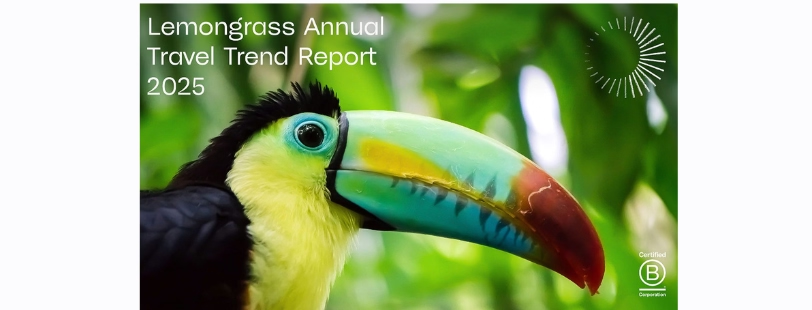
Global Wildlife Tourism Market is Estimated to be Valued at US$ 135 Bn in 2022
The global wildlife tourism market is valued at US$ 135 Bn as of now and is expected to be worth US$ 219.9 Bn by the year 2032 at a CAGR of 5% between 2022 and 2032.
Tourists, on noticing that entry fees lent out by them are invested in the maintenance of the wildlife sanctuaries, don’t hesitate to shell out extra if the preservation of animal life is assured. Visitors also show interest in diverse flora and fauna species. This calls for the availability of hotels, eco-tourism, guesthouses, and jungles. This would thus facilitate the relaxation of tourists in place of the hassles of urbanization. This factor is bound to drive the wildlife tourism market in the forecast period.
The other sources of income for wildlife sanctuaries could be shooting short films and movies, trips arranged by schools and colleges, and – not to forget – wildlife photographers. These three categories of income could keep the momentum going for the wildlife tourism market.
These days, wildlife photography is being increasingly taken up. The millennials are exploring various career options. Even taking up wild photography as a hobby is all set to keep the cash registers ringing for the wildlife tourism market going forward.
Tourists could enjoy wildlife from the water, including kayaking, canoeing, or actually being on a cruise. Certain African countries provide local transportation like mokoro, which do appeal to the majority of travelers. Future Market Insights has, through its analysts and consultants, paved the way for constructive research through its latest market study entitled ‘Wildlife Tourism Market’.
Key Takeaways from Wildlife Tourism Market
- There are numerous wildlife sanctuaries known for their wildlife. Some of them include Lone Pine Koala Sanctuary (Brisbane, Australia), Noah Arc (Georgia, US), Chengdu Moonbear Rescue Centre (China), and Corbett National Park (Uttarakhand, India).
- India is home to various wildlife sanctuaries, especially for tigers. Kanha National Park and Ranthambore wildlife sanctuary (both based out of India) are two of them, wherein tourists could enjoy the view of tigers. The Tiger tourism market in India is flourishing on this count. At the same time, the negative impacts pertaining to tiger tourism can’t be ignored. For instance – tourists tend to disturb tigers by taking their photographs. Every time they do not go for candid photographs.
- Africa leads the wildlife tourism market with various opportunities being provided to tourists; like an aerial view of wildlife in Tanzania and Kenya. In other words, hot air balloon safaris are being made available.
“Wildlife tourism benefits local tribes a great deal; as they could make a living out of it and also poachers get discouraged from plundering the animals’ endangered species. This factor is likely to catalyze the wildlife tourism market in the near future”, says an analyst from Future Market Insights.
What are the Various Factors Driving the Wildlife Tourism Market?
The wildlife tourism market has received a lot of traction in the industry.
Due to the entry fees, tourists pay which are invested in conserving animals, more and more tourists are willing to return to wildlife sanctuaries and are willing to pay extra fees just to ensure animal life conservation. In addition to merely watching animals, tourists are also aware of various fauna and flora species and consequently are inclined to participate in wildlife tourism, which is likely to sustain the growth of the wildlife tourism market share.
Many eco-tourism villages and jungles have been developed in and near wildlife sanctuaries, attracting a large number of tourists as well as hotels, guest houses, and eco-tourism villages to the area. As a result, tourists now do not only visit national parks and wildlife sanctuaries to see animals, but they also do so for relaxation, after they have been away from the hustle and bustle of city life.
Due to better infrastructure, movie shootings also take place in nearby areas, which provides fuel for the growth of wildlife tourism. Also, many schools organize field trips to wildlife parks to introduce students to the flora and fauna in the parks. Wildlife photographers who keep visiting the parks also play an important role in encouraging the development of the wildlife tourism market.
Tigers are an important part of many wildlife sanctuaries, and Ranthambore wildlife sanctuary and Kanha National Park in India are among the few places where tourists can see these animals up close. Many visitors are visiting these sanctuaries simply to see tigers, which is boosting global wildIife tourism.
By visiting wildlife destinations, tourists encourage the improvement and conservation of wild animals, wildIife tourism also supports the local tribes because when tourism flourishes, they have more opportunities for improved livelihoods. The constant flow of tourists discourages poachers from killing wildlife, and certain entrance fees are charged to tourists when visiting wildlife sanctuaries, creating demand for wildlife tourism.
Competitive Landscape & Key Companies
- With travelers preferring guided cycling or walking with the objective of being physically active at the time of viewing wildlife, the key participants are into providing these accessories to them.
- The key participants in the wildIife tourism market include Chinkara Journeys, Adventure Canada, Echidna Walkabout Wildlife and Nature Tours, Birding Ecotours, Frontiers North Adventure, Elm Wildlife Tours, Oryx Worldwide Photographic Expeditions, Nature Trek, and Rockjumper Wildlife Tours.
- Birding Ecotours provide tours by destination, date, and likewise.
- Rockjumper Birding is known for its Uganda-bound Gorilla Trekking Adventure.








